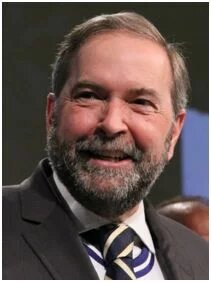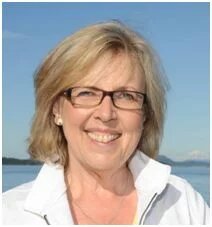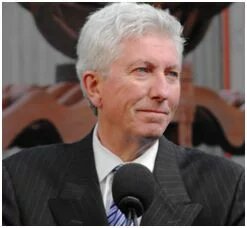

Ahead of the 19 October election, there is a tight, three-way race to run Canada – the world’s second largest country (in terms of land mass) and 11th largest economy. The embattled incumbent -- conservative Prime Minister Stephen Harper – is running neck-in-neck with two contenders: Tom Mulcair, Leader of the New Democratic Party (NDP) and Justin Trudeau, Leader of the Liberals.
The stakes are high because – in the nearly 10 years since Steven Harper took office – Canada’s reputation as a ‘liberal’ democracy has been tarnished. Liberals, who ruled Canada for 27 of the last 37 years, promoted gun control, good public services, some sensitivity to environmental concerns, and a spirit of international cooperation. Under Harper, there has been a retreat from such values, a roll-back of environmental legislation, and a strong alignment with his base of support in Alberta – one of the country’s 10 Provinces that is home to Canada’s oil sands crude.
The “winds of change” have come to Alberta, which is Canada’s most conservative Province in some respects. Last May’s elections ended nearly 40 years of Conservative leadership of the Province. In a surprising upset, voters elected left-of-center NDP leader Rachel Notley who formed the Province’s first majority NDP government. Among other things, this election appeared to signal the desire among the electorate to reduce economic dependence on oil revenue. It may signal change at the federal level as well.
Those who relish the opportunity to unseat Harper lean toward casting their votes for Tom Mulcair or Justin Trudeau. Neither smaller party -- the Quebecois Bloc led by Gilles Duceppe or the Green Party led by Elizabeth May -- have any chance of wide electoral success. Nevertheless, it is nearly guaranteed that May – with her strong support, including in her home base of British Columbia – will at least retain her seat if not gain a second.
In Canada’s parliamentary democracy, the Prime Minister serves as Minister of the Crown (Queen Elizabeth II), Chair of the Cabinet, and a member of the House of Commons, which has 338 seats – one for each “riding” or jurisdiction in the country. The Prime Minister’s party must control 170 of the 338 seats in order to form a majority government. At this point, it is anyone’s guess which party might win the election.
Observers are also asking whether the winning party will be able to form a government. According to tradition, Canada’s Governor General (the Queen’s representative) asks the party which wins the most seats to try to form a government. If the NDP or Liberals win, they are likely to work together to form a government. In another scenario, the Conservatives’ Stephen Harper could win, but the NDP and Liberal Party may refuse to form a government with him. If that happens, the Governor General might turn to the the NDP and Liberals to form a government to seek the 'confidence of the House'. Stay tuned.
The Knot: Economy, Climate, Energy and Pipelines
In all likelihood, Canada is in an economic recession, battered by global economic turmoil and punished by its over-reliance on natural resources. Oil prices have plunged from about US$100 per barrel during the last election (four years ago) to some US$40 per barrel today. Commodities, including oil, represent about half of the country’s exports. According to CBC news (August 25) sources, three-quarters of Canadians will vote for the party with the best record on the economy and jobs, but only 43 per cent say they evaluate the economy as either very good or good.
The fate of the Canadian economy is closely tied to the issues of energy and pipelines. Harper has thrown his support behind not only the Keystone XL pipeline into the United States, but also a proposed Northern Gateway line (to transport bitumen coal to British Columbia for shipment to Asia). Pipeline proposals also include an Energy East line (to the east coast) and Kinder Morgan’s expansion of its Trans Mountain line to Vancouver.
Trudeau supports Keystone XL, but Mulcair and May both oppose it on environmental and employment grounds (saying that it will export 40,000 jobs). May also opposes the Kinder Morgan pipeline, on which Mulcair has not taken a stance.
On cutting carbon emissions, each of the opposition candidates has a different position: Green Party leader May supports the “fee and dividend” approach – which is a revenue-neutral carbon tax employed successfully in British Columbia. NDP leader Mulcair advocates a cap and trade system, while Trudeau would let the provinces choose their instrument.
While Harper has boasted about the country’s reduction in greenhouse gas emissions, he was derided by May and Trudeau in the first leaders’ debate because the reduction is largely due to lower economic activity. Indeed, Harper has promised emission regulations for the oil and gas sector, but not delivered.
The New York Times (“The Closing of the Canadian Mind”, August 14, 2015) also accuses Harper of a “war against science” by among other things, trying to defund government research centers in the High Arctic, and placing Canadian environmental scientists under gag orders. Even in the Canadian press, mentions of federal climate change research have dropped 80 percent during Harper’s reign.
The judgment of the NYT is harsh: that Harper has been “a poor manager by any metric” and that “Mr. Harper seems to think that his job is to prevent democracy. But the worst of the Harper years is that all this secrecy and informational control have been at the service of no larger vision for the country.”
Some highlights of each major candidate’s platform follow:
Stephen Harper, Conservative Prime Minister
The 2015 platform promises include:
- expanding access to broadband.
- tax relief for service club members.
- cutting red tape.
- making adoption affordable.
- support for home ownership.
- support for public transit.
- expanded skills training.
Tom Mulcair, NDP
Experience: A lawyer, Mulcair held a seat in Quebec’s National Assembly for the Liberals and then served as Minister of Sustainable Development, Environment and Parks in the Quebec government of Liberal Premier Jean Charest in the mid-2000s. He has served as an NDP member of parliament and party co-director and then became the NDP’s Opposition House Leader in 2011.
Mulcair accuses Harper of draining Canada’s economy by relying too heavily on the oil sector and ignoring the manufacturing sector at the expense of 400,000 jobs.
NDP promises include:
- reversal of spending cuts to health care and education.
- a child-care program that would add a million new spots.
- improved nutrition programs.
- major commitments to public transit.
- decriminalization of marijuana possession with the goal of removing its production and distribution from the control of organized crime.
- an increase the Guaranteed Income Supplement (GIS) by $400-million annually to help lift 200,000 seniors out of poverty. He also pledges to gradually roll back the eligibility for Old Age Security to age 65 after Harper's Conservatives raised it to 67.
- a shift away from the Conservatives’ touch approach to crime.
Justin Trudeau
Experience: Prior to his election in 2008, Justin Trudeau worked as a teacher and served as the chair of Canada’s national youth service program. He is the oldest son of the Pierre Trudeau, the former Liberal Prime Minister of Canada (1968-1984).
The Liberal promises include:
- tax breaks, child care, and parental leave benefits for the middle-class.
- equitable taxation.
- financing infrastructure, especially clean technology.
- phasing out fossil fuel subsidies.
- benefits for veterans.
- increased spending on First Nations education by $2.6 billion over four years.
- a national inquiry for murdered and missing Aboriginal women.
- legalization of marijuana use.
Elizabeth May
Experience: The American-born Canadian lawyer and politician is leader of the Green Party and, as of 2011, the first person from the Party to become a Member of Parliament. She represents Saanich—Gulf Islands in British Columbia. From 1989-2006, May served as the Executive Director of the Sierra Club of Canada. Her campaigning included efforts to prevent aerial insecticide spraying in Nova Scotia; uranium mining in Nova Scotia; and opposition to nuclear energy.
The Green Party’s vision and promises include:
- more jobs, including in renewable energy sectors.
- equitable taxation, including a “polluter pays” tax.
- a Green Venture Capital Fund and support for local enterprises.
- bold plans to cut greenhouse gases.
- democratic reform.
- international support for peace building.



